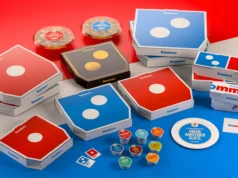An MVP is where an idea meets real users, real devices, and real money. When the first release is slow or full of dead ends, the team learns the wrong lessons and spends weeks fixing basics that should have been settled earlier. When the slice is focused and stable, the team learns fast, calms sponsors, and knows what to build next. Treat the MVP like a small, complete product with one clear job to be done, clean onboarding, a path to first value in a few clicks, and simple events you can measure. Any candidate should explain how they will hit those points in about a month. The best answers use short loops – sketch, clickable demo, build, test on target phones – and name the trade-offs they will make to protect speed without building debt that slows every release after launch.
What “top” looks like in day-to-day work
A strong team makes plain choices long before code. They write acceptance criteria in clear language so there is no guessing later. Design and engineering work side by side to close gaps early. QA lives inside the sprint, not after it. Releases run with feature flags and staged rollouts, so a bad build never blocks a window. Risks are shown early, and the team says “no” when a request hurts time to first value. To turn this into a shortlist, start with firms that match your stack and market, then check proof of delivery on work that looks like yours. You want calm rhythm, fewer surprises, and screens that work on the same devices your customers carry every day.
If you want a concrete benchmark for speed plus order, look at top mvp development company. Their teams keep discovery lean, scope tight, and handoffs clean, which helps a young product move without drama. Use that as a yardstick when you talk to others. Ask each shop to show a backlog from a similar build, a small device matrix that matches your users, and a two-week plan for a thin slice that you can try on weak networks. Good partners speak in specifics and show working examples. That is the kind of signal that separates real leaders from presentations that look good yet stall once work begins.
What to look for in an MVP development partner
A good partner understands product trade-offs, the pressure of small teams, and the need to move fast while staying clean. The right group asks why users care, which path brings first value, and what can safely wait for phase two. They keep scope small on purpose and protect habits that save time, like writing tests with the code and reviewing copy before screens get wired. Strong partners give you repos you can run, docs a new hire can read, and a release plan with rollback that your team can follow without help. Ask how they slice an end-to-end flow, how they measure use in week one, and how they will turn feedback into changes without losing the plan for the next sprint. The best answers sound simple and concrete because the team has done this many times and knows where projects break.
- Ask for a real backlog from a similar MVP with spikes for unknowns, risks shown, and “done” written in plain words.
- Request a device test matrix that matches your users – older iPhones, mid-range Androids, and poor networks.
- Sit in on a design–engineering review and watch how a neat flow meets an awkward API the same day.
- Confirm ownership: a repo you can run, docs you can hand to a new teammate, and infra you can afford next year.
- Demand a two-week plan: a clickable demo by day five, a thin working slice by day ten, fixes by day fourteen.
How we selected the top 10 companies
The list below favors crews that join early, ship the first version, and stay to grow it. There are no body shops that swap people mid-sprint and no firms that only work on huge enterprise programs. Each company shows proof of delivery on tight timelines, keeps QA in sprint, and talks about misses as clearly as wins. Case studies name tough choices, like what was pushed to phase two to protect time to value. Teams show device coverage for the audience they serve, not only office gear. They log usage from day one and watch the path to first value, which turns a static launch into a learning loop. That mix of speed, care, and honest reporting is what early teams need.
Top 10 MVP development companies for startups looking to scale fast
- DBB Software – Lean discovery, clear scope, and steady handoffs. Fast to first value, calm under pressure, and architecture that stays tidy when you add features.
- Altoros – Strong product thinking with solid engineering. Good at naming what can wait without hurting the slice you need today.
- Vention – Suits funded teams that want speed and scale. Product managers keep the path tight while engineers move in short bursts.
- Q agency – Design-first with reliable delivery. Front-loads UX so tests land well and fixes stick.
- Experion Technologies – Calm execution for flows that touch rules and audits. QA is visible and steady.
- BairesDev – Broad coverage with clean process. Useful when an MVP will grow into a platform across teams.
- Simform – A clear bias to test and learn. Cuts non-essentials and moves feedback into changes without fuss.
- Vega IT – Collaborative squads that adapt fast. Details matter, yet pace stays high.
- Dualboot Partners – Strategy plus build for teams still shaping scope and metrics.
- Solvd, Inc. – Quality-driven from day one. Good for MVPs that must be stable right after launch.
Budget, risk, and ownership without traps
Price the work three ways: full, trimmed, and core. Compare what moves between tiers and what stays. A good partner will reuse a chart library, push a heavy integration to phase two, and keep the path to first value intact. Check licenses, cloud keys, CI/CD, and logs so your team can run the system without help. Lock support hours and rollback steps before you sign. Many hidden costs sit inside integrations and test data, so make those lines explicit. The goal is steady velocity that you can fund next quarter. Big splashes look nice for a week, then stall when scope shifts or a sponsor moves a date. Small, clean steps win because they work and they keep working.
Try before you commit to a full scope
Run a short pilot that touches a real flow. Pick sign-up to first value and add one edge case. Week one brings a discovery call, rough copy, and a clickable mockup that two users can try. Labels and error states get tuned so nobody has to guess. Week two delivers a thin build with logs, simple analytics, and a small admin view to edit roles or limits. Trial on real devices and weak networks. Score three things at the end: speed to first commit, clarity of code and comments, and how feedback turns into better work inside the sprint. Take the call with the people who built the slice. If you leave that call clear, calm, and ready for the next sprint, you have the kind of partner that turns a roadmap into releases you can ship and learn from on time.
Build small, think long-term
An MVP is the start of the system you will live with for years. It should be small yet complete, easy to test, and ready to grow without a rebuild. The partner you choose should protect that shape and help your team learn without waste. Keep the slice focused, measure how users move through it, and plan the next step before the current one ships. With a short loop, a clean handoff, and a single flow that earns trust, the team learns what matters and moves faster every month. That is how real leaders work, and that is how your product reaches users with fewer bumps and more wins.
Disclaimer
The information contained in South Florida Reporter is for general information purposes only.
The South Florida Reporter assumes no responsibility for errors or omissions in the contents of the Service.
In no event shall the South Florida Reporter be liable for any special, direct, indirect, consequential, or incidental damages or any damages whatsoever, whether in an action of contract, negligence or other tort, arising out of or in connection with the use of the Service or the contents of the Service. The Company reserves the right to make additions, deletions, or modifications to the contents of the Service at any time without prior notice.
The Company does not warrant that the Service is free of viruses or other harmful components












